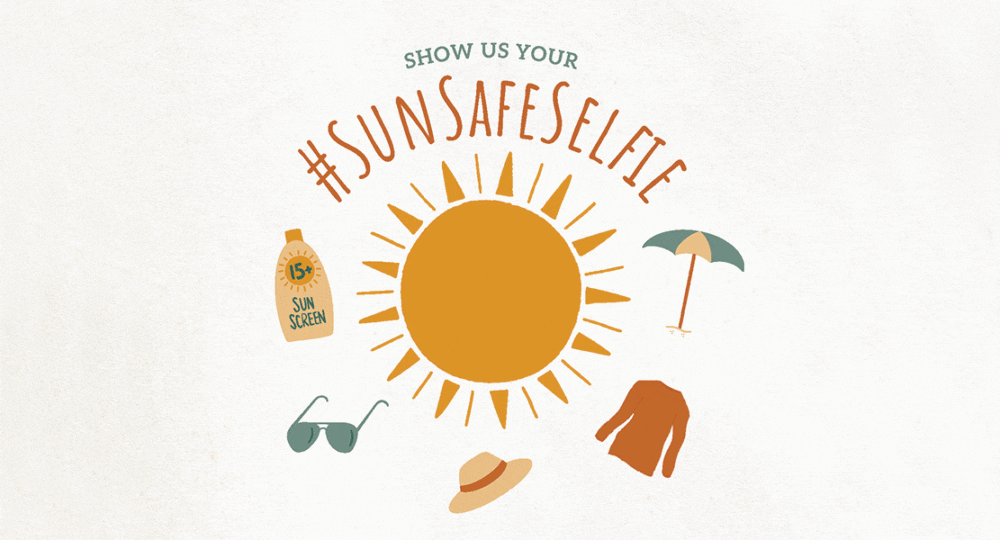It’s the time of year when lots of people are heading outdoors. The sunshine and warm weather beckon people out to enjoy beaches, pools, parks, and lots of other outdoor areas. It’s good for people to spend time playing and exercising outdoors. It’s also imperative that people do so safely and avoid damage caused by the sun.
According to the Centers for Disease Control and Prevention (CDC), nearly 5 million people in the United States are treated for skin cancer each year. Skin cancer can be severe, expensive, and sometimes even deadly. Melanoma, the most dangerous kind of skin cancer, causes around 8,000 deaths per year in the US. Fortunately, most skin cancers can be prevented.
Ultraviolet (UV) radiation is known to cause skin cancer. UV rays come from the sun and human-made sources such as tanning beds and welding torches.
There are three main types of UV radiation:
- UVA – These rays can cause skin cells to age and cause some indirect damage to cells’ DNA. They are mainly linked to long-term skin damage, such as wrinkles, but may also play a role in some skin cancers.
- UVB – These rays can damage the DNA in skin cells directly and are the primary rays that cause sunburns. They are thought to cause most skin cancers.
- UVC – These rays are generally not a risk factor for skin cancer because they are filtered by the atmosphere and do not reach the earth’s surface.
The amount of UV exposure a person gets depends on the strength of the rays, the length of time skin is exposed, and whether the skin is protected with clothing or sunscreen. Damage from exposure to UV rays builds up over time. This is why sun protection should start at an early age.
Tips to stay safe in the sun:
- Limit direct sun exposure by seeking shade, especially when UV rays are the strongest between 10 am and 4 pm.
- Keep babies younger than six months out of direct sunlight.
- Cover up with clothing and a wide-brimmed hat to protect as much skin as possible. Choose clothes with a tightly woven fabric. Some clothing even has SPF rated protection.
- Protect eyes with wrap-around sunglasses that block at least 99% of UVA and UVB light.
- Use appropriate sunscreen.
- Avoid tanning beds and sunlamps, as both can cause severe long-term skin damage and contribute to skin cancer.
Choose the right sunscreen, and use it correctly:
- Put on sunscreen 15-30 minutes before going outdoors; it needs time to absorb into the skin.
- Choose one with “broad-spectrum” protection- This protects against UVA and UVB rays.
- Choose one with a sun protection factor (SPF) of at least 30- The higher the SPF number, the more protection against UV rays. SPF 15 sunscreen filters 93% of UVB rays, SPF 30 filters out 97%, SPF 50 blocks about 98%, and SPF 100 about 99%.
- Water-resistant does not mean waterproof- No sunscreens are waterproof or sweatproof. Water-resistant sunscreens must specify if they last 40 or 80 minutes while swimming or sweating.
- Reapply sunscreen every 2 hours, as well as after swimming or sweating.
- Use sunscreen even on a cloudy day, as 80% of the sun’s UV rays can get through clouds.
- Check the expiration date before using- Most sunscreens are good for at least 2-3 years; however, if they have been exposed to heat for long periods, they may not work as well.
Tips to soothe sunburns:
- Drink plenty of water or juice to replace lost fluids
- Use cold water or cold compresses to soothe the skin
- Use pain medicine (e.g., Tylenol or Motrin) if needed to relieve painful sunburns
- Stay out of the sun until the sunburn is fully healed
Join the CDC in raising awareness about the benefits of sun protection by posting a picture on social media of you using sun protection and tag it #SunSafeSelfie.
Resources:





